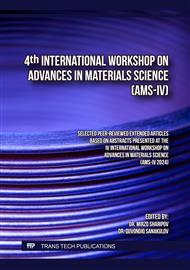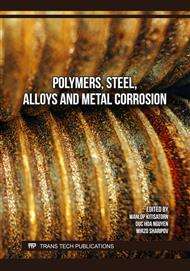p.3
p.11
p.21
p.33
p.41
p.49
p.57
p.65
Study of Variability Phenomena in Direct Energy Deposition of Nickel-Based Superalloy on Geometric Accuracy and Residual Stress Formation
Abstract:
This paper studies the effect of the direct energy deposition (DED) process parameters varying within 20% on the geometric accuracy and formation of residual stresses in the products. In the course of the study, an experiment was carried out according to Taguchi's L9 plan to fabricate samples by varying the laser travel speed, effective focusing distance, feed rate of metal powder composition, and process pause, which were then compared with the rates of geometry change and crystal lattice distortion. The obtained results were subjected to statistical analysis using correlation, regression and factor analysis to determine the influence and significance of factors. As a result, correlations between the process parameters and sample characteristics were identified. As correlation and factor analysis showed, a change in process factors within 20% does not significantly affect most of the quality parameters, except for the level of residual stresses. Geometric and strain parameters are weakly correlated with each other, but no statistically significant correlations were found between them. The analysis of variance showed that the fusion rate and powder flow rate have the greatest influence on the geometric accuracy parameters. These factors have the most significant statistical influence on the response, indicating the importance of controlling these parameters to achieve high geometry accuracy. Regression analysis allowed to obtain adequate models of residual stress level. It was found that the model for residual stress level by planes (200) is more reliable than the model for residual stress level by crystallographic plane (111). The obtained data allow to optimize the DED process in order to achieve a given geometric accuracy and reduce residual stresses in the manufactured products.
Info:
Periodical:
Pages:
21-30
Citation:
Online since:
December 2024
Price:
Сopyright:
© 2024 Trans Tech Publications Ltd. All Rights Reserved
Share:
Citation:



